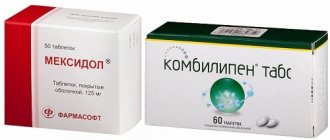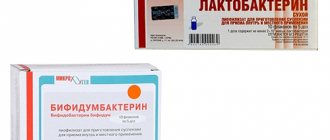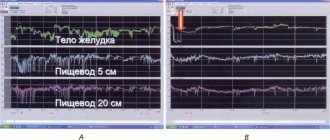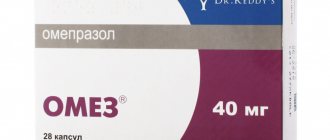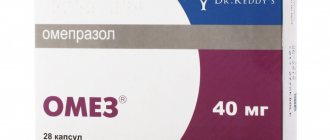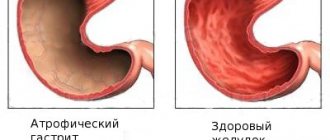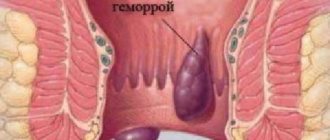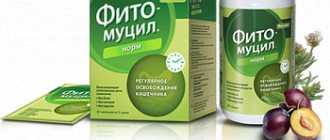Diseases of the digestive system are widespread everywhere. They require a long period of treatment and lifestyle adjustments. Omez and De-Nol occupy a key place in basic therapy. They belong to different pharmacological groups and influence individual parts of the pathogenesis of gastrointestinal diseases.
Characteristics of Omez
The effect of the drug is provided by omeprazole, a proton pump inhibitor. Reduces the production of hydrochloric acid. Available in the form of capsules and solution for intravenous administration.
Omez and De-Nol help restore the quality of the mucous membrane lining the stomach and duodenum.
Indications for use:
- ulcerative and erosive processes, regardless of etiology (metabolic disorders, stress, consequences of taking certain medications, etc.);
- reflux esophagitis, including those that caused the appearance of ulcerative and erosive lesions;
- Zollinger-Ellison syndrome;
- pancreatitis;
- systemic mastocytosis.
One-time use is possible for heartburn caused by eating disorders or climate change, to eliminate belching.
The daily dose for adult patients is 20-60 g, correction is carried out based on the clinical picture. It is administered by infusion under the supervision of a physician - 80-120 mg/day.
Contraindications for use: age under 16-18 years, periods of pregnancy and lactation, individual intolerance to the drug. Prescribe with caution for renal and hepatic dysfunction.
Brief characteristics of the drugs
To understand the effect of taking these drugs together, it is necessary to understand what each drug is individually.
Omez
Omez is a well-known representative of the group of proton pump inhibitors. Its main effect - reducing the acidity of gastric juice - is due to its ability to reduce the production of hydrochloric acid.
The following indications for use of the drug are available:
- duodenal or gastric ulcer;
- GERD – gastroesophageal reflux disease;
- conditions associated with increased secretion of gastric juice with high acidity;
- eradication of Helicobacter pylori;
- when taking NSAIDs - for the prevention of mucosal erosions and peptic ulcers;
- prevention of the development of aspiration pneumonitis (Mendelssohn syndrome);
- prevention and treatment of dyspepsia.
Note! According to modern data, Omez can be prescribed in childhood. Its effectiveness in this group of patients has been proven in the treatment of GERD and peptic ulcers.
Omez capsules have a characteristic appearance: the trade name is on each shell on a transparent background
Taking the drug may be accompanied by a number of negative symptoms:
- headache;
- pain in the abdominal area, often accompanied by dyspeptic symptoms;
- diarrhea or constipation;
- bloating.
Less commonly, undesirable symptoms may appear from the hematopoietic, immune, respiratory, urinary and reproductive systems. Muscle weakness, dermatitis, and disruption of the sensory organs may occur. In the presence of concomitant osteoporosis, bone strength decreases.
De-Nol
De-Nol is a branded drug produced in the Netherlands. The active ingredient is bismuth tripotassium dicitrate.
The drug has the following therapeutic effects:
- reduces the manifestations of the inflammatory process;
- has an astringent effect - as a result of biochemical reactions and interaction of the drug with tissues, a protective protein film is formed on the surface of the latter;
- causes the death of Helicobacter pylori;
- increases the formation of prostaglandin E, which, in turn, reduces the secretion of hydrochloric acid by the cells of the gastric mucosa and increases the secretion of mucus and bicarbonate;
- triggers cytoprotective mechanisms, increasing the resistance of the mucosa to aggressive factors;
- stimulates tissue regeneration;
- reduces the activity of the gastric enzyme pepsin, which can negatively affect the wall of the digestive tract.
The formation of a protective film is due to the formation of chelate compounds with a protein substance. It prevents the development of erosions and ulcerative defects.
De-Nol fights Helicobacter pylori
The product is used in the presence of the following pathologies:
- peptic ulcer;
- exacerbation of chronic gastroduodenitis and gastritis;
- irritable bowel syndrome, in case of predominance of diarrhea;
- various types of functional dyspepsia.
The medication is well tolerated. In some cases, it causes a number of side effects. From the gastrointestinal tract we are talking about nausea, diarrhea or constipation and vomiting. On the part of the skin – itching and rashes. For the nervous system, the drug in high doses can be toxic, even leading to the development of encephalopathy.
Action of De-nol
The active ingredient is bismuth subcitrate. The action is complex: astringent, gastrocytoprotective and antimicrobial, inhibits the activity of the bacterium helicobacter pylori. This pathogenic flora is considered the main cause of the development of gastritis of the stomach, peptic ulcer, and erosive lesions of the mucous membrane.
It is prescribed for the same diseases as Omez, but has a broader effect. It not only reduces the synthesis of hydrochloric acid, but also inhibits the development of Helicobacter pylori, improves intracellular metabolism in the duodenum and antrum of the stomach, thereby accelerating the regeneration of the mucous membrane. Recovery comes faster.
Indications for use: peptic ulcer, gastritis, gastroduodenitis, irritable bowel syndrome, functional dyspepsia, pancreatitis.
Adults are prescribed 1 tablet of De-Nol 4 times a day, half an hour before meals, or 2 tablets in the morning and evening.
Contraindications:
- pregnancy and lactation;
- children under 4 years of age;
- renal failure in the stage of decompensation;
- allergy to the active ingredient.
The dosage for children under 12 years of age is calculated based on body weight - 8 mg/1 kg, that is, 1-2 tablets per day. Adults are prescribed 1 tablet 4 times a day, half an hour before meals, or 2 tablets in the morning and evening. Take 120-150 ml of water.
The course of treatment is 4-8 weeks, it is possible to adjust the dosage and frequency of administration based on the clinical picture.
Patients should know that De-nol causes the stool to change color - it becomes black. This shouldn't be scary. After completing therapy, you should stop taking medications that contain bismuth in any form for 2 months.
Comparison of Omez and De-nol
Drugs are often prescribed in combination. In this case, the interval between taking medications should be at least 1-1.5 hours and it is advisable to take Omez earlier. For example, in the morning they drink a capsule with half a glass of water, and De-nol is taken immediately before breakfast. De-nol creates a protective film on the mucous membrane and slows down the absorption of omeprazole.
Similarities
The indications for prescribing the drugs are similar. If the symptoms of gastrointestinal diseases are minor, then you can choose one of the antiulcer drugs based on your own feelings. Another common feature is contraindications for use.
Differences
Omez and De-Nol are not analogues. As already mentioned, they affect the body differently. The action of the first is limited to a decrease in acidity. 1 hour after taking Omez, secretory function decreases by 50%, and by the 4th day of treatment, the pH reaches 3. Restoration of hydrochloric acid production occurs 3-4 days after discontinuation of the drug. But 70-80% is excreted by the kidneys.
1 hour after taking Omez, secretory function decreases by 50%.
In patients with normal metabolism, De-nol acts only in the gastrointestinal tract. Forms a protective film on the surface of ulcerative and erosive lesions, which protects against the aggressive effects of pepsin and hydrochloric acid and accelerates regeneration. Has selective antibacterial activity. The speed of exposure is 30-50 minutes after administration. Excreted in feces.
Which is cheaper?
The cost of Omez depends on the manufacturer. The price ranges from 70-120 rubles. for foreign currency, the solution is more expensive, up to 360 rubles. per package. A package of De-nol is offered at the pharmacy for 320-370 rubles. On average, one tablet costs 7-8 rubles.
De-Nol is considered an expensive drug, which is available only in tablets. The price ranges from 347-1002 rubles. depending on the number of tablets. Standard packaging – 112 doses.
Features of joint reception for women
There are special periods in a woman’s life when the use of medications must be minimized. During pregnancy and breastfeeding, most drugs are contraindicated. The combined use of De-Nol with Omez is impossible during this period, since bismuth is prohibited for pregnant women for more than five weeks. During fertilization and attachment of the egg to the uterus, taking any synthetic drug can affect the likelihood of early abortion.
During pregnancy, medications should be minimized
The instructions for use indicate that due to the insufficient number of studies on the issue, taking omeprazole during pregnancy is contraindicated. The limitation is due to the fact that it easily penetrates the placenta. If there are serious indications, Omez can be prescribed to pregnant women as monotherapy. This is advisable in cases where the benefit outweighs the potential risk. The decision to introduce the drug into the treatment regimen is made by the attending physician.
What is better to take – Omez or De-nol
It is impossible to compare which drug is better. When the etiology of a disease of the digestive system is bacterial infection, Omez will relieve adverse symptoms, but will not be able to suppress the infection. For peptic ulcers caused by stress, De-nol is not prescribed.
When signs indicating inflammatory processes in the digestive tract appear, you should consult a doctor. An accurate diagnosis can only be made after pharyngoscopy.
If you take medications on your own, you can miss the development of a malignant process. The first symptoms of stomach cancer resemble peptic ulcers.
Doctors' opinion about Omez and De-nol
Alina Valerievna, therapist, Ulyanovsk: “I prescribe 2 drugs at the same time and only after FGS. Often the therapeutic course has to be supplemented with antibacterial agents. I believe that only Omez is ineffective for ulcers.”
Igor Vladimirovich, gastroenterologist, Kostroma: “I am categorically against comparing 2 medications. Indications for use are different. I myself take Omez for heartburn, but I don’t recommend this treatment to anyone. It is important to identify the cause of the disease.”
Inna Nikolaevna, pediatrician, Sterlitamak: “Increasingly we have to prescribe De-nol to young patients. I try to limit myself to one medicine.”
Patient reviews
Elena Ivanovna, 54 years old, Lugansk: “I am intolerant to antibiotics, so De-nol is a salvation for exacerbation of peptic ulcer disease.”
Sergey, 32 years old, Magnitogorsk: “I didn’t pay attention to nutrition, but as a result I developed gastritis. The doctor prescribed Omez and De-nol at the same time. Within 2 weeks the pain went away and the nausea disappeared.”
Vladislav, 42 years old, Kislovodsk: “They prescribed both medications, the condition worsened. It turned out that I was allergic to De-nol. Instead, I had to take 2 antibiotics at once. The treatment turned out to be expensive. And my wife constantly takes Omez, in the fall and spring, for prevention. I have long forgotten about gastritis, which I suffered from in my youth.”
Reviews
Due to the availability of a huge number of drugs from different manufacturing companies, reviews from those who have directly encountered this or that product are especially relevant. This applies to both doctors and patients.
Lydia, 21 years old
I have been suffering from ulcers for a long time. On the eve of the summer session, another exacerbation occurred, despite taking all kinds of sedatives. This time, the use of Motilak, Prosulpin and De-Nol was not effective enough. The doctor recommended adding Omez and drinking it together with De-Nol - both drugs half an hour before meals three times a day, one dose. And, lo and behold, within a day I felt much better. After the course of treatment, no new exacerbations or any side effects were observed.
Therapist of the highest category, Alexey Viktorovich, 45 years old
Successful therapy for gastritis requires an integrated approach. Proton pump inhibitors and De-Nol are present in most treatment regimens for this disease. Each of the drugs has an effect on a specific link in pathogenesis. Taking them simultaneously, according to clinical trials, does not in any way affect each other’s action. But I would recommend, if possible, taking them 30 minutes before different meals.
